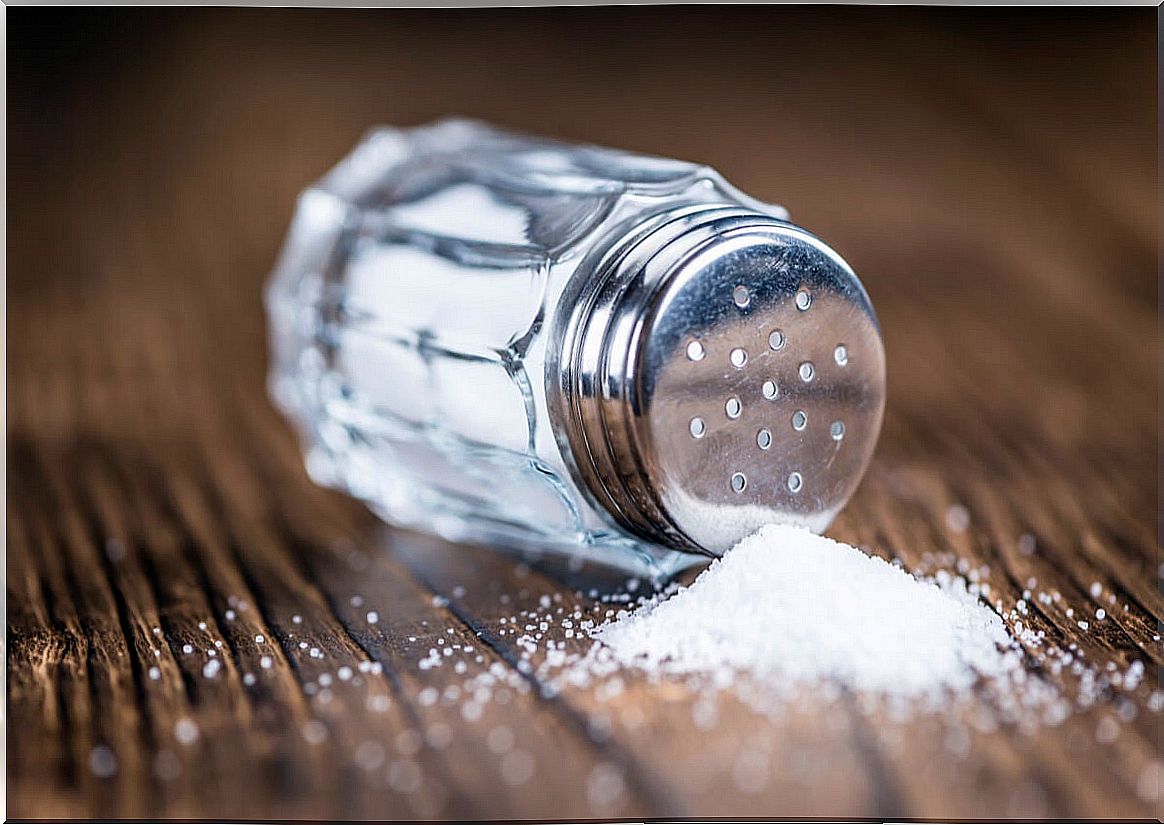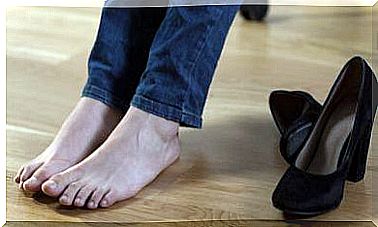How To Limit Salt Intake? 8 Strategies
For some years now, the need to limit salt intake has been insisted on. And not only at the individual level, but it is also intended to involve sectors such as gastronomy and the food industry.
To do this, it is not enough to remove the salt shaker from the table or add less salt to meals. There is a large part of the intake that occurs without our being aware of it. So if you are interested in discovering where it is hidden and how to reduce salt in the diet, we invite you to continue reading.
Salt, sodium and their presence in the diet
The lifestyle of many people evolves quickly and with it eating habits change. One of the consequences that is observed is the increase in the consumption of products prepared with high amounts of fat, added sugar and salt.
The real problem is caused by the sodium found in common salt, because in excess it can cause serious health problems.
World consumption data in 2010 indicated an average of 3.95 grams of sodium per person per day. This is almost twice the maximum threshold set by the World Health Organization (WHO).
In this way, almost without being aware of it, the intake of this component has skyrocketed to levels much higher than those recommended by the competent authorities. A trend that needs to be reversed.
Why is it important to limit your salt intake?
Although a small amount of sodium is necessary, its excessive consumption leads to health problems. For this reason, the competent authorities advocate limiting the consumption of salt.
According to the World Health Organization there are a series of non-communicable diseases that are affected by the high presence of this mineral: high blood pressure, strokes and cardiovascular diseases.
The reduction in blood pressure is observed immediately regardless of previous intake levels. But lowering it below 2 grams a day of sodium is more beneficial than just lowering it.
It should be noted that these recommendations are for all people in general, whether they are hypertensive or not. It also includes groups such as pregnant women, infants (except for medical exceptions) and children.

How much salt is safe for daily consumption?
The Institute of Medicine establishes an adequate sodium intake of 1,500 milligrams per day for young adults. It is estimated that in this way it is possible to compensate for sweat losses and replenish the levels necessary for the proper functioning of the body. The maximum tolerable intake is 2,300 milligrams of sodium daily.
These amounts do not apply to people who may have much higher losses, such as competitive athletes or workers exposed to high heat stress (firefighters, for example).
It is also different for other groups of people who need lower amounts:
- Men and women ages 50 to 70: 1,300 milligrams a day.
- Adults over 70 years: 1200 milligrams a day.
- People with hypertension, diabetes or chronic kidney disease should put special emphasis on keeping their intake below these values.
Strategies to limit salt intake
Given the current sodium intake data and the real benefits of reducing its presence, it is very interesting to know ways to limit salt intake in order to reach the recommended values.
1. Base your diet on fresh foods
There are few fresh foods that naturally provide significant amounts of sodium. This is usually much more present in all those prepared industrially.
So the best recommendation is to cook at home whenever possible and base your diet on vegetables, fruits, grains, legumes, and low-sodium protein sources.
2. Reduce the presence of processed products
Salt is a common ingredient in a large number of ultra-processed products, as it serves to improve the texture and flavor, while extending its useful life. It is clear that in recent decades these are the most responsible for the intake of salt above the recommendations.
For this reason, it is necessary to restrict the use of precooked dishes, pastries, appetizers, sauces, seasonings, soups, cold cuts or processed cheeses.
3. Read the labels
Sometimes, the sense of taste is not the only guide to know if a food contains salt among its ingredients. Reading the labels of the products allows you to know this data better and not be surprised.
Here are the sodium-related nutritional messages that may be encountered that require attention:
- Salt / Sodium Free – Less than 5 milligrams of sodium per serving.
- Very low in sodium: less than 35 milligrams per serving.
- Low in sodium: 140 milligrams or less of sodium.
- Reduced in sodium – These products have 25% less sodium than the same standard manufactured product.
- Low sodium or salt: an amount 50% less than in the standard product.
- No added salt: the product does not contain added salt or sodium, but this does not imply that it does not contain naturally.
4. Control the salt that is added in the kitchen
It is advisable not to abuse the salt shaker, neither when cooking nor to dress the dishes at the table. Although in recent years it has been known that this fact is not the main responsible for the high amount of sodium that is ingested, it does allow to reduce it in part.
5. Choose the correct cooking method
Some culinary techniques maintain the flavor of the ingredients more than others. For example, steaming or papillote compared to boiling.
6. Monitor your intake of monosodium glutamate
Monosodium glutamate is recognized as a food additive by the European Union and is another of the main sources of sodium in the diet. It is a set of salts that are identified on the labels under the initials E620, E621, E622, E623, E624 and E625.
Although its use in the kitchen is not common, it is widespread in the food industry. And many times in unexpected products, like all the processed mentioned before.
To this must be added that monosodium glutamate produces other adverse effects in some people. For this reason, the European Food Safety Agency asked in 2017 to reduce the maximum doses allowed in food.
7. Reduce little by little and educate the palate
Like many aspects related to taste, the craving for salt and salty foods is also acquired. The palate gets used to a threshold below which food becomes tasteless or not as palatable.
This is why, in the event that salt has not been strictly prohibited, it should be reduced gradually to get used to it. In the case of young children, the best option is to try to delay its introduction as much as possible.

8. Cooking with herbs and spices
In the kitchen there are other ingredients capable of adding flavor and enhancing the aromas of recipes. These can replace the function of sodium and limit salt intake.
Some of them are the following:
- Fresh herbs: basil, oregano, parsley, coriander, thyme, rosemary or bay leaf.
- Spices: turmeric, cayenne, pepper, ginger, cumin, saffron.
- Vinegar, lemon juice or plain yogurt to prepare dressings.
Limiting salt intake is necessary to improve health
Although sodium is a necessary mineral for the body, today its intake is well above the recommended amounts. And in high doses it is related to high blood pressure and an increased risk of cardiovascular disease.
Reducing its presence in the diet involves trying to cook more at home, using techniques that maintain the flavor of food (such as papillote or steam) and using the appropriate seasonings.
Likewise, it is necessary to avoid products with a high amount of sodium on the menus, such as cheese, olives or canned fish. You have to limit the intake of pastries, commercial sauces and snacks .









